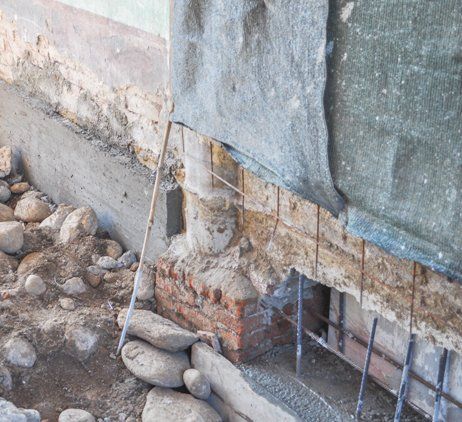
Underpinning may also be performed if its current foundations have become compromised due to damage, modifications, or additions made to it.
Construction work requiring roof deck replacement presents considerable structural risks to the building above it and requires meticulous design and construction techniques in order to minimise these risks.
Subsidence
Subsidence is one of the main reasons to underpin a property, often caused by shifting soil beneath its foundations due to leaky or unrepaired plumbing fixtures, nearby large trees or excessive rainstorms. Subsidence results when this changes leads to soft/weak foundations supporting your structure that support it; for example from ingress of water due to plumbing leaks not repaired timely enough or just by nature itself – such as becoming soft/weak over time due to infiltration through holes, leaky pipes or simply repeated heavy downpours etc.
It may be that the initial design for foundations wasn’t adequate to the conditions under which they were laid; perhaps soil characteristics weren’t fully understood at that point in time.
Underpinning Melbourne is a construction technique in which existing structures’ foundations are strengthened and stabilized to support modifications or additions to the building.
Underpinning isn’t without risks, and should only be undertaken by professional structural engineers with experience in underpinning and related construction works. An inspection by both an engineer and surveyor must take place prior to concreting in order for an engineer to ascertain whether it’s safe to proceed before designing a detailed structural design of underpinning work to meet building regulations.
Sedimentation
If the soil beneath your home has been affected by fluctuation in water table or erosion due to nearby construction activities, underpinning may be required. Underpinning is designed to increase load bearing capacity of existing foundations so they can support additional load placed upon them.
Subsidence can also cause issues beneath your home that necessitate underpinning, typically by excavating and installing concrete foundation footings or piers that are longer than what was installed with your current building. In these instances, underpinning will usually involve excavating and installing longer foundation footings or piers to support it.
Underpinning is a specialized form of construction and should only be undertaken by highly-skilled engineers and contractors. Special inspection should always take place as this work involves significant structural work that should be considered a specialty project. Design professionals of record should include underpinning requirements in their contract documents as this will enable contractors to carry out this task more easily.
Load Bearing Capacity Deterioration
Underpinning is necessary when the load-bearing capacity of soil has diminished due to changes in ground conditions, such as compaction, moisture content or poor drainage. It could also be necessary if its original design did not accommodate for soil conditions on which it rests, or due to changes in building usage or usage patterns.
Underpinning is used to shift load away from an existing foundation and onto a deep pile anchored into solid soil strata, eliminating settlement while adding extra support to an existing structure.
This approach is most frequently utilized for underpinning walls and should only be employed where brickwork conditions permit its use. Installation time may be quicker compared to traditional methods; however, vibration issues may arise and an adequate space requirement must be considered during installation. Furthermore, it may not suit all soil conditions.
Settlement
Underpinning is typically required when the foundation of a structure has already become compromised or when making additions that require increased load-bearing capabilities, such as when renovating older buildings or making “pop-top” renovations (adding stories to an existing structure), as well as condo conversions.
Underpinning is the practice of increasing the depth or breadth of a foundation to ensure it rests on more suitable soil stratum, distributes its load over an expanded area or both. It may be accomplished using traditional mass concrete underpinning or micro-piles in cases with limited access around its foundation.
Mudjacking and polyurethane injection are non-invasive options available as alternatives to underpinning; however, they should only be seen as short-term fixes. If your house has been shifting for no apparent reason that seems unlikely to reverse itself, underpinning may be the answer; make sure a Pre Purchase Homebuyers Survey has been performed so professionals can inspect and analyze its soil characteristics prior to initiating any underpinning work.
